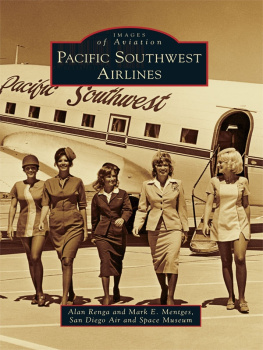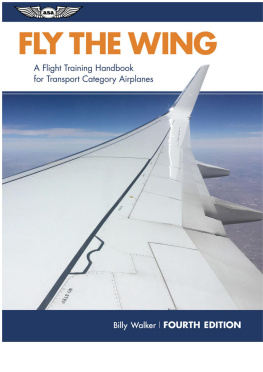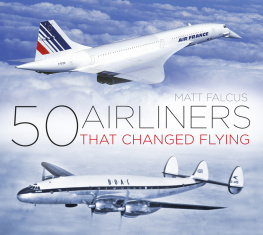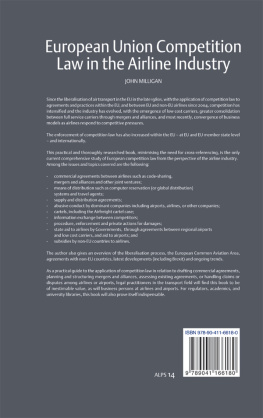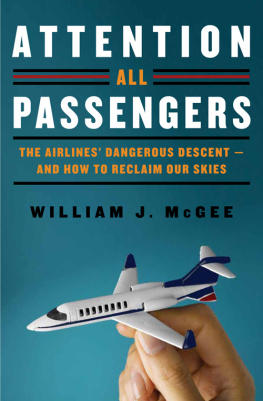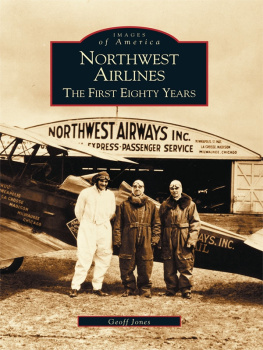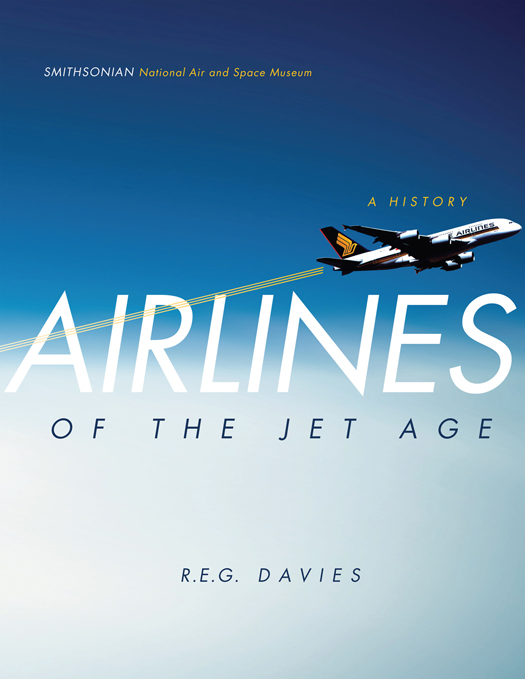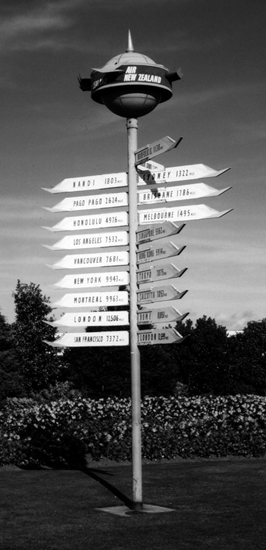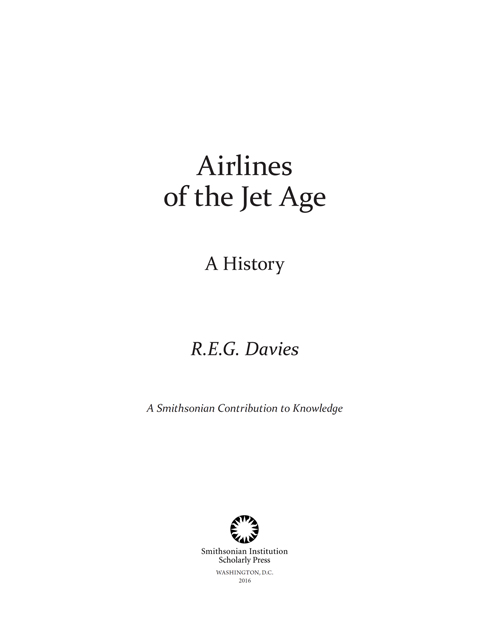Signpost at Christchurch, New Zealand, with mileage to London in both directions reflects the global extent of the worlds airlines. (Davies, ca. 1975)
Published by
SMITHSONIAN INSTITUTION SCHOLARLY PRESS
P.O. Box 37012, MRC 957
Washington, D.C. 20013-7012
www.scholarlypress.si.edu
Compilation copyright 2011 by Smithsonian Institution
All rights reserved. This publication may not be reproduced, stored in a retrieval system, or transmitted in any form or by any means, electronic, mechanical, photocopying, recording, or otherwise, without the prior permission of the publisher.
Cover image: Double-decked Airbus A380 (2007). Sunil Gupta/Lockon Aviation Photography.
British Library Cataloguing in Publication Information Available
Library of Congress Cataloging-in-Publication Data:
Davies, R. E. G. (Ronald Edward George)
Airlines of the Jet Age / R.E.G. Davies.
p. cm.
Includes bibliographical references.
ISBN-13: 978-0-9788460-8-4 (hardcover : alk. paper)
ISBN-10: 0-9788460-8-7 (hardcover : alk. paper)
1. AirlinesHistory. 2. Jet transportsHistory. 3. Aeronautics, CommercialHistory. I. Title.
TL720.D28 2010
387.7dc22 2010043061
ISBN (hardcover): 978-0-9788460-8-4
ISBN (ebook): 978-1-944466-07-7
A full subject index is included in the print edition.
v3.1
To my wife, Marjorie
whose patience and forbearance over the years
enabled me to write this book.
FOREWORD
after studying this book [few] will doubt that the airlines are destined to make as remarkable progress between now and the year 2000 as they did in their first 40 years.
Peter Brooks, review of A History of the Worlds Airlines (1964)
Brookss words were prescient indeed, considering what has taken place since R. E. G. Daviess landmark air transport history first appeared 45 years agovastly more airlines and routes, thousands more aircraft, and millions more people flying in them. Trying to track this expansive and expanding activity over decades of change seems to be a nearly impossible task.
Yet this fact-filled and readable volume does exactly that. It also makes clear that only an informed and diligent researcher can fully understand and so clearly explain the many long-term changes in global air transport. Doyen of the worlds air transport historians for a half century, Davies has accomplished what few others would have the nerve (let alone the energy) to attempt: a detailed survey of how airlines around the world have developed during nearly six decades of what the author terms the Jet Age. The magnitude of the task he faced and overcame is made plain with just one stark statisticwhen he completed his book in 1964, some 270 airlines operated worldwide. As this new study appears 45 years later, the number of scheduled airlines has burgeoned four-fold to more than a thousand.
The sheer number of disparate facts that make up this account is evident in the index, but that only hints at the concerted research effort involved. Preparing this history has involved nearly a decade of dedicated archival research, writing, and creating Daviess signature maps and charts. That productivity builds on his varied career spent in different parts of the industry: the British Air Ministry, then British European Airways, then airline market research in both Britain and the U.S., followed by nearly three decades as curator of air transport at the Smithsonians National Air and Space Museum. To this background he has added travel to more than 120 countriesand 25 books on air transport history. The result of this unparalleled experience and effort is the first truly comprehensive assessment of how airlines adapted to the arrival of jet aircraft, why some carriers failed along the way, and what all this has meant to the flying public.
Readers will better understand from these pages why commercial aviation has become such a brutally competitive industry, one of thin profits (if not huge losses), rising fuel prices, ever-changing ticket systems reliant on complex computer-based yield management strategies, and for the last three decades, a marketplace defined by substantial deregulation. One sad result: airline careers lack the excitement (and income) they generated decades ago. What was once a glamorous career has become just another job. The aircraft are safer (far fewer passengers are hurt or killed per thousand people flying each year), but traveling as a passenger has totally lost its one-time romance. A domestic economy-class trip in the U.S. is now one with far less personal space and more security worries than an inter-city bus. Full aircraft, charges for so many things that used to be free, and sometimes being caught on grounded aircraft for hours at a timethese have come to characterize the world of flying for many of us. Except for the few in first-class (about one percent of all traffic), food service today barely approaches fast-food coffee shops.
Modern airports are usually efficient places, but their parking lots grow ever larger, and one has to thread long ticket and onerous security lines to reach the departure gate. During the Jet Age, once-empty terminals have become shopping malls to generate operating income.
In one important aspect, Peter Brookss prediction has not been fulfilled: Todays airliners rarely get you there any faster than they did a half century ago. Routine trips can be even slower because of air traffic control issues, air or ground congestion, or weather delays. For trips of up to 300400 miles, many travellers are rediscovering trains which take them between city centers faster than any airline, usually at considerable savings over airfare. Davies is a strong supporter of these rail options, especially the high-speed services long enjoyed in east Asia and western Europe since 1964.
In one chapter, Davies strongly criticizes the wrongheaded and pricy experiment with supersonic transport (SST), which he makes clear, was a technical marvel but financial disaster for all concerned. A monument to the pioneering British-French effort, the handsome Concorde can now be seen only in museums. Throughout its years of widely promoted service, steadily improved (though less heralded) workhorse subsonic airliners carried the worlds millions.
Particularly valuable in this account are descriptions of numerous airlines and routes that may be new to many readers. Famous global flag carriers such as Pan American, KLM, and British Airways, and the trunk routes that they travelled (including the bellwether North Atlantic run) are described and analyzed here. So, too, are more unusual stories of creating services to exotic and off-the-beaten-track locations, the so-called thin routes of more limited use or appeal that help to make up the worldwide picture of air transport. The growth of Asian services is especially dramatic. So is the work performed by important airline innovators and entrepreneurs such as Skytrains Freddie Laker, and Indias Tata family, among others often unknown outside of the airline business. Davies has met many of these industry leaders, adding to the value of this chronicle.
This well-balanced history melds elements of technology (improving aircraft and systems), economics (as in trying to fly airplanes as full as possible), government regulation (largely limited to safety concerns after about 1980), and foreign affairs (obtaining landing rights, or dealing with fluctuating oil costs that often parallel political crises in the Middle East). More important, this is a history concerning people (those who work for the aircraft manufacturers or airlines and the millions who regularly fly); labor relations (including unions of pilots, flight attendants, and aircraft controllers, among others); culture (for example, the reversal of business versus leisure shares of the total market); and daily management decision-making. Here and there, anecdotes remind us of the lighter human aspects of an intensely serious business. All of these elements have created the modern air transport system, efficient and impersonal, without which much of the worlds commerce and life styles would grind to a halt.


